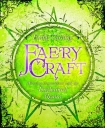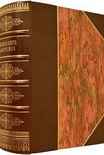Faery Craft: Weaving Connections with the Enchanted Realm Carding, Emily (first color ebook reader txt) 📖

Book online «Faery Craft: Weaving Connections with the Enchanted Realm Carding, Emily (first color ebook reader txt) 📖». Author Carding, Emily
Horse
A majestic white horse, often bedecked with many bells, is the traditional steed of Faery queens. Horses are particularly associated with the Celtic goddesses Rhiannon, Epona, the Morrigan, and the Greek Hekate, who is sometimes depicted as having three animal heads upon one body, one of which is a horse. All of these goddesses may be considered to be queens of Faery, alongside many other titles in some cases. Horses are also the companions of Faery kings, of course. Manannan Mac Lir had a magickal horse that could carry people over the waves and deep into his otherworldly kingdom beneath the sea.
Marc Potts, “Pixy and Skylark”
(www.marcpotts.co.uk)
Horses often appear as Faery beings in their own right, such as the kelpie, a lethally dangerous and malicious spirit of water who drowns any who climb on its back, and of course the beautiful symbol of spiritual perfection and purity, the unicorn.
Folklore aside, horses are extremely intelligent and magickally sensitive creatures and will often act as guardians. The landscape of the British Isles is blessed by many chalk figures of horses carved into the landscape. They are of varying age, but some, such as the famous white horse at Uffington, have been shown to date back to the Bronze Age and possibly even further. These are truly sacred sites, where the veil between worlds is thin and may offer you a glimpse of a gleaming white mare dancing elusively in the dusk…
Birds
Birds have long been associated with the Faery realm, most particularly black birds, such as ravens, crows, and, of course, blackbirds. In The Book of Invasions, Eochaid, the son of the high king, receives a prophetic dream that predicts the arrival into Ireland of the Tuatha de Danann, in which he sees them as a flock of blackbirds. The shapeshifting goddess Morrigan, who as we have already noted is a Faery queen, is strongly associated with ravens and crows, often taking their form. The goddess Rhiannon, another Faery queen, was accompanied by blackbirds who had the power of enchanted song. As blackbirds can be heard singing at the liminal times of dawn and dusk, when faerie activity is most apparent, they are considered to be gatekeepers of the otherworld.
Cows
Within Faery lore there are both cows that are very much independent Faery beings in themselves and those that are simply property. In the ancient tales of the Tuatha de Danann, the Cattle Raid of Cooley was a major campaign, caused by the trickery of the goddess Morrigan. This extremely cow-oriented adventure also features the Morrigan taking the form of a white heifer with red ears and, later on, as an old woman milking a three-teated Faery cow.
There are also many tales within more recent folklore of faeries taking the milk of cows, causing milk to sour, or making cows’ udders dry up when they are wronged or denied in some way.
Pigs
Pigs may seem an unlikely contender for the Faery kingdom, but herds of pigs are a regular feature of the old Celtic tales. Manannan of the Tuatha de Danann owned a herd of pigs that could be slaughtered and eaten one night and be returned to full health the next day. The Norse god Freyr, who was the king of Alfheim (Elf-Home), rode a wild boar named Gullinbursti, who had the power to travel over earth, air, and sea. Myrddin Wylt, the mythical or possibly historical wild man of the woods, from whom the more well-known mythical figure of Merlin arose, counted a pig as one of his close friends of the forest and famously addressed poetry to him.
Insects
It seems obvious to point out that there is a close connection between certain insects and the Faery realm, though there is not a great deal of lore to support this. Faeries are often depicted as riding on the backs of certain insects, particularly dragonflies, ladybirds, and butterflies. Though it would be easy to dismiss this as mere fancy and aesthetic license, and mostly a result of the “flower fairy” mentality, there is some truth to be found in this. To “ride” an animal of any kind is a term that can be used in a Witchcraft context to mean not literally physically riding but to astrally ride alongside the spirit of that animal within its body. In my experience, Faery beings have an intimate relationship with all creatures of this land, which enables them to do this easily, and I believe this explains many instances of unusual behaviour in animals and insects, particularly when guarding or protecting places of power and sacred sites.
I have experienced this phenomenon a number of times with insects, particularly bees, wasps, butterflies, dragonflies, and damselflies. A lovely example occurred whilst in the final stages of working on this book. I had printed out the document and my husband was reading it in the garden when a butterfly landed on the page and stayed there for some time. It landed precisely on a line of the interview with R. J. Stewart that appears later in the book, which states that faeries never appear with “little butterfly wings”! A sense of humour is so important when dealing with Faery.
Dogs
Dogs feature heavily in Faery lore, predominantly as the red-eared white hounds of the otherworld. Known as the Cwn Annwn in Welsh tradition, they would accompany Arawn or Gwyn ap Nudd on their hunts or on Samhain night when the host would ride out, bringing fear to





Comments (0)